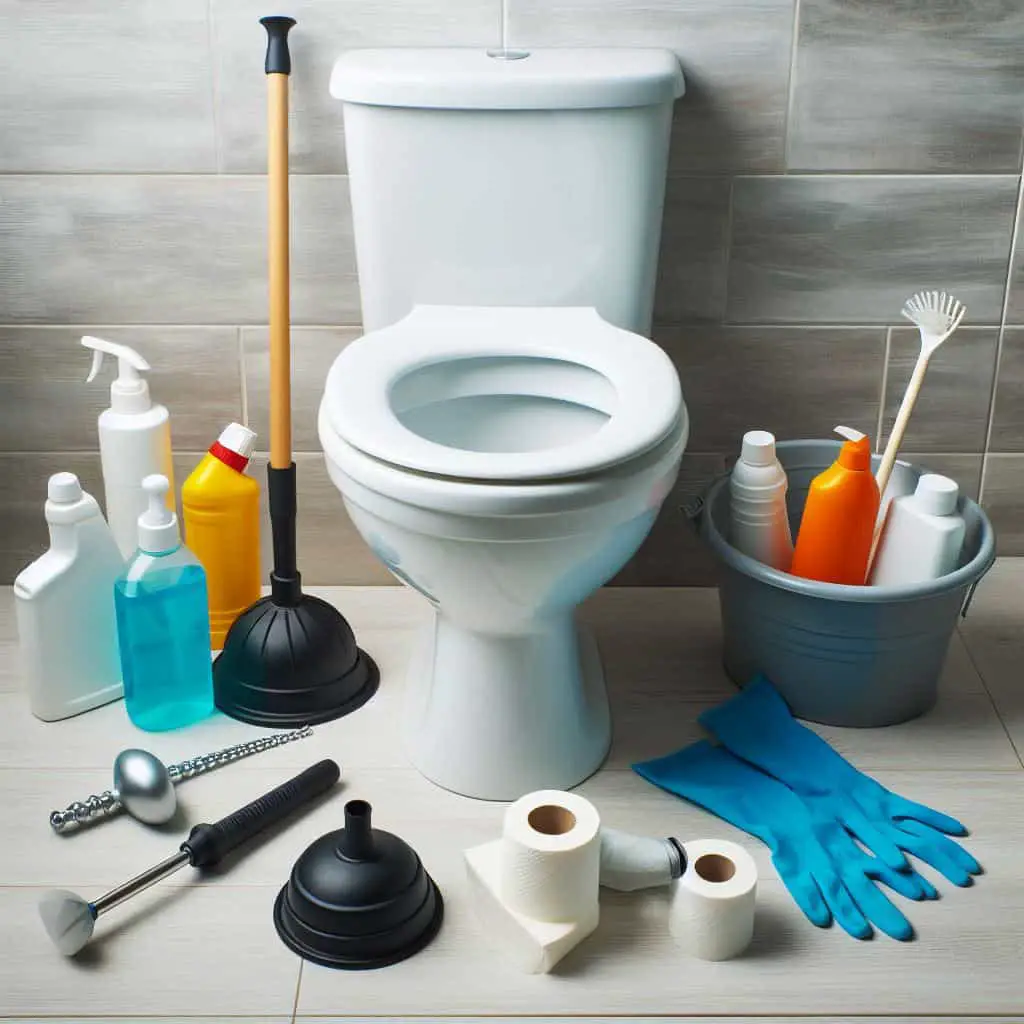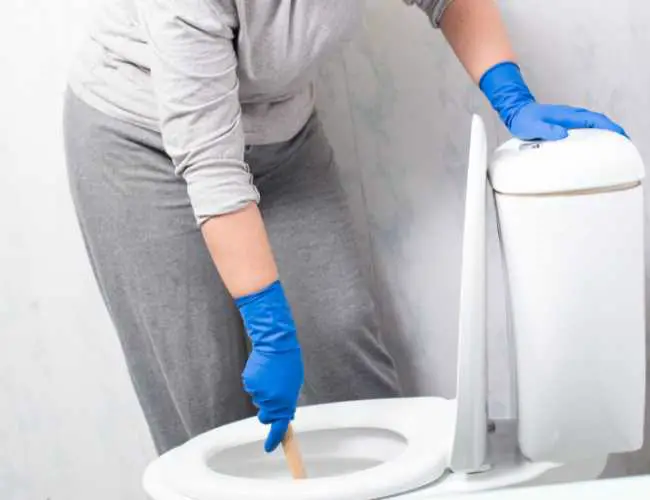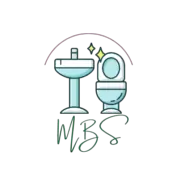Dealing with a clogged toilet can be an unpleasant task, especially when it’s filled with poop. However, it’s a problem many of us face at some point, and knowing how to tackle it can save time, money, and embarrassment.
The question of “how to unclog a toilet with poop in it” is not just about restoring functionality to your bathroom; it’s also about maintaining hygiene and preventing potential plumbing disasters. This guide is designed to help you navigate through the process with practical tips and straightforward steps.
Whether you’re a homeowner or a renter, the ability to unclog a toilet confidently and efficiently is an invaluable skill. So, roll up your sleeves, because we’re about to dive into a topic that, while not glamorous, is essential for comfortable and hassle-free living.

What Causes a Toilet to Clog with Poop?
A toilet clogged with poop is not only a nuisance but also a puzzle many wish to solve quickly. Understanding the culprits behind such clogs is the first step in preventing future occurrences. Here’s what typically causes a toilet to clog with poop:
- Excessive Waste: A common cause of clogs is simply too much waste being flushed at once. Toilets are designed to handle a certain amount of waste, and exceeding this can lead to blockages.
- Insufficient Water Flow: Toilets rely on water to push waste through the plumbing. If there isn’t enough water in the tank or the flow is weak, waste may not move as intended, causing a clog.
- Non-Flushable Items: Even if they seem harmless, products like wet wipes, feminine hygiene products, and even some thicker types of toilet paper don’t break down easily and can quickly lead to clogs when mixed with poop.
- Low-Flow Toilets: While eco-friendly, some older low-flow toilets lack the necessary pressure to clear dense waste and toilet paper, leading to clogs more frequently than their high-flow counterparts.
- Blocked Plumbing Vents: These vents help regulate the air pressure in your plumbing system. If they’re blocked, it can disrupt water flow and waste movement, causing a clog.
- Poor Pipe Design: Sometimes, the issue lies in the design of the plumbing system itself. Sharp bends or narrow pipes can easily become clogged, especially if they’re tasked with moving large amounts of waste.
- Hard Water: High mineral content in water can lead to the buildup of scale and deposits in your pipes, narrowing them and making clogs more likely.
By identifying what’s causing your toilet to clog, you can take the necessary steps to prevent future issues. It’s often as simple as using less toilet paper, flushing twice if needed, or avoiding flushing non-flushable items.
If you suspect a more complex issue, like a blocked vent or poor pipe design, it might be time to call in a professional to assess your plumbing system. Understanding these causes empowers you to maintain a clog-free toilet and ensures your bathroom remains functional and hygienic.
Can I Unclog the Toilet Myself or Should I Call a Professional?
When faced with a clogged toilet, the decision to tackle the problem yourself or call in a professional depends on several factors, including the severity of the clog, your comfort level with DIY solutions, and the tools at your disposal.
DIY Unclogging:
For minor clogs, where the toilet hasn’t overflowed and the water level remains low, a DIY approach can often be effective. If you’re comfortable using a plunger, it’s the first tool to reach for. Here’s what to consider for a DIY unclog:
- Confidence: Are you familiar with basic plumbing tools like a plunger or a toilet auger? If you feel confident in using these tools, you might be successful in unclogging the toilet yourself.
- Tools: Ensure you have the right tools. A good-quality plunger with a flange is ideal for toilets. In more stubborn cases, a toilet auger can help break up the clog without damaging the porcelain.
- Safety: Always wear gloves and ensure the area is well-ventilated. Avoid using chemical drain cleaners, as they can be harmful and may not be effective against large organic clogs.
When to Call a Professional:
Sometimes, a clog is too stubborn for a plunger or auger, or you might not feel comfortable using these tools. Here’s when it’s best to call a professional plumber:
- Recurring Clogs: If clogs are a frequent problem, this could indicate a deeper issue within your plumbing system that a professional should address.
- Overflowing Toilet: If the toilet overflows or the water level is too high, attempting to unclog it yourself could lead to a mess and potential water damage.
- Lack of Tools or Skills: If you don’t own a plunger or toilet auger, or if you’re unsure how to use them properly, it’s safer and more effective to call a plumber.
- Unidentifiable Cause: When you can’t determine the cause of the clog or suspect it may be due to non-flushable items or structural issues, a professional has the tools and expertise to diagnose and solve the problem.
In summary, minor clogs can often be cleared with a little effort and the right tools. However, if you’re facing a serious blockage, recurring issues, or simply prefer not to deal with the problem yourself, it’s wise to call a professional plumber to ensure the job is done correctly and hygienically.
What Tools Do I Need to Unclog a Toilet with Poop?
Unclogging a toilet with poop doesn’t require an extensive toolkit, but having the right tools on hand is crucial for a quick and clean resolution. Here’s what you’ll need:

- Plunger: Opt for a plunger with a flange design, as it’s more effective for toilets. The flange fits better into the toilet bowl outlet, creating a strong seal and increased suction power.
- Rubber Gloves: Protect your hands and maintain hygiene with a sturdy pair of rubber gloves. These are essential for preventing direct contact with waste and contaminated water.
- Toilet Auger: For more stubborn clogs that a plunger can’t clear, a toilet auger, also known as a closet auger, can reach deeper into the toilet’s drain to dislodge blockages without scratching the porcelain.
- Bucket: Keep a bucket handy to empty excess water from the bowl if it’s too full, or to contain any waste that might be removed manually.
- Disinfectants and Cleaners: After unclogging the toilet, you’ll need disinfectants and bathroom cleaners to sanitize the area and any tools used during the process.
Assembling these tools before you start the unclogging process ensures that you can work efficiently and maintain cleanliness. Proper use of these tools will help you handle most clogs without the need for professional intervention.
Step-by-Step Guide: How Do I Unclog a Toilet with Poop in It?
Unclogging a toilet filled with poop might seem daunting, but with the right approach, you can get your toilet back in working order. Here’s a step-by-step guide to help you through the process:

Step 1: Preparation
Don your rubber gloves to protect your hands and prevent contamination. If the water level in the toilet bowl is high, use a bucket to remove some of the water to prevent spillage during plunging.
Step 2: Position the Plunger
Take the flange plunger and insert it into the toilet bowl, ensuring the flange is pulled out (if it’s a foldable type) to fit snugly into the drain hole. The plunger should be submerged in water to create an effective seal.
Step 3: Plunge with Proper Technique
With the plunger firmly in place, push down gently to expel the air trapped inside, then commence a series of vigorous and steady plunges. The goal is to create enough suction and pressure to dislodge the clog. Keep the seal intact and maintain the water level to cover the plunger.
Step 4: Check the Drain
After about 15 to 20 plunges, lift the plunger quickly to break the air seal. The water should rush down the drain if the clog has been cleared. If not, repeat the plunging process.
Step 5: Use a Toilet Auger (if necessary)
If plunging doesn’t work, it’s time to use a toilet auger. Insert the cable end into the toilet bowl and turn the handle clockwise. Once you feel resistance, crank the handle to break through the clog, then retract the auger and flush the toilet.
Step 6: Cleanup
After successfully unclogging the toilet, clean and disinfect the plunger and auger with a bathroom cleaner. Clean the toilet bowl with a toilet brush and flush again to ensure water flows smoothly. Wash your hands thoroughly, even though you wore gloves.
Remember, patience and persistence are key. If these steps don’t resolve the issue, it may be time to call a professional plumber to avoid further complications
FAQ
When it comes to unclogging toilets, several questions frequently arise. Here are answers to some common queries to help you handle this messy situation more effectively:
Is it safe to use chemical drain cleaners for toilets?
Chemical drain cleaners are not recommended for toilets as they can damage the porcelain and the pipes. Moreover, if they don’t clear the clog, you’re left with a bowl full of hazardous chemicals that pose a risk to skin and eyes during subsequent attempts to plunge or auger the toilet.
How often should I use a plunger?
Use a plunger whenever you notice the toilet isn’t flushing properly due to a clog. Regular use isn’t needed and overuse can potentially damage the toilet’s seal. Remember, plungers are for clogs, not maintenance.
Can a clogged toilet cause damage to my plumbing system?
Persistent clogs can lead to increased pressure in your plumbing system, which may cause leaks or damage to the pipes. It’s essential to address clogs promptly to avoid such issues.
What are the risks of using a toilet auger?
Toilet augers are relatively safe to use but require proper handling to avoid scratching the porcelain bowl. Ensure you follow the manufacturer’s instructions and use gentle pressure when navigating the auger through the toilet’s curves.
Should I try to unclog a toilet if I have a septic system?
Yes, you can still unclog toilets manually with a plunger or auger if you have a septic system. However, avoid using chemical cleaners as they can disrupt the bacterial balance in your septic tank, leading to more significant issues.
Why does my toilet keep getting clogged?
Frequent clogging could be due to a number of issues, such as flushing inappropriate items, insufficient water flow, a buildup of calcium or other minerals, or problems with the main sewer line. If clogs are a regular occurrence, it’s best to consult with a professional plumber to diagnose and fix the underlying issue.
Addressing these FAQs helps equip you with the knowledge to unclog your toilet effectively and maintain a healthy plumbing system. Remember, when in doubt, it’s always best to contact a professional for advice or service.
Conclusion
In conclusion, knowing how to unclog a toilet with poop in it is a valuable skill that can save you from frustration and unnecessary plumbing costs. With the right tools and techniques, such as using a flange plunger or a toilet auger, you can tackle most clogs yourself.
Remember to always prioritize safety and hygiene by wearing gloves and cleaning up thoroughly afterwards. For persistent or recurrent clogs, don’t hesitate to call in a professional plumber.
Maintaining a proactive approach to toilet care and being mindful of what you flush can prevent the majority of clogs, keeping your plumbing in top shape and your home comfortable.
